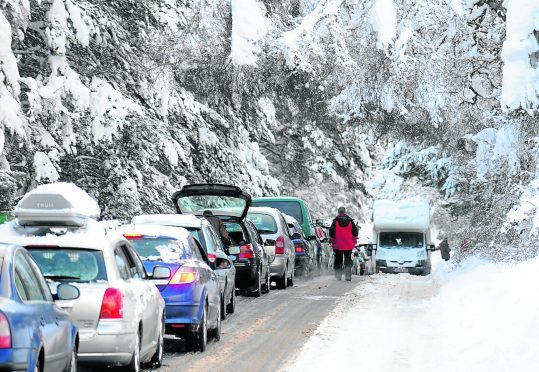Highland councillors are calling for a successful tourism route, promoting the north’s famous snow roads, to be almost doubled in size to provide an economic boost to local communities.
Compared to the famous North Coast 500 route in the north of Scotland, and the newly introduced NE250 for Aberdeenshire and Moray, the Snow Roads is already being hailed for bringing economic benefit to areas around the Cairngorms.
Councillors are now seeking the 90-mile route, which embraces the eastern Cairngorms, to be extended south and west to southern Strathspey and Badenoch, taking in more of the Highlands, and stretching as far south as Dalwhinnie.
Strathspey Councillor Bill Lobban said: “It is the logical thing to do. The Snow Roads is a fantastic idea, and it is already reaping rewards to area east of the Cairngorms.
“But we wondered why the route ended in Grantown-on-Spey and not Dalwhinnie, as there are plenty of scenic snow routes in the area further south and west.
“It would provide huge benefits to communities in southern Badenoch and Strathspey that were suffering from major economic problems.”
Cllr Lobban said he and his colleagues in the area want the route extended to include Nethy Bridge, Boat of Garten, Kincraig, Kingussie, Newtonmore, Laggan and Dalwhinnie.
He added: “These are all areas that are historically well-known to be in a snowy region. It would add another 50-70 miles onto the route, but should be seen as a welcome addition.
“Tourists taking advantage could then make their way north to do the NC500. To me, it is a no-brainer.”
He revealed the group will approach Cairngorm National Park and Highlands and Islands Enterprise seeking the inclusion of the extra roads into the tourism route “as soon as practicable”.
Currently, the Snow Roads Scenic Route is a 90-mile journey from Blairgowrie to Grantown-on-Spey traversing the highest public road in Britain and travelling through the outstanding landscapes of the eastern Cairngorms.
The road links the communities of Braemar, Ballater and Tomintoul with a range of natural and cultural attractions.
The Snow Roads are slow routes and drivers are encouraged to take their time to enjoy the views, villages and attractions along the way.
They feature a host of steep hills, ‘blind’ summits and tight bends.
Last week, the Snow Roads – the highest A route in Britain – topped both the Place and People’s Choice categories at the Scottish Awards for Quality in Planning.
